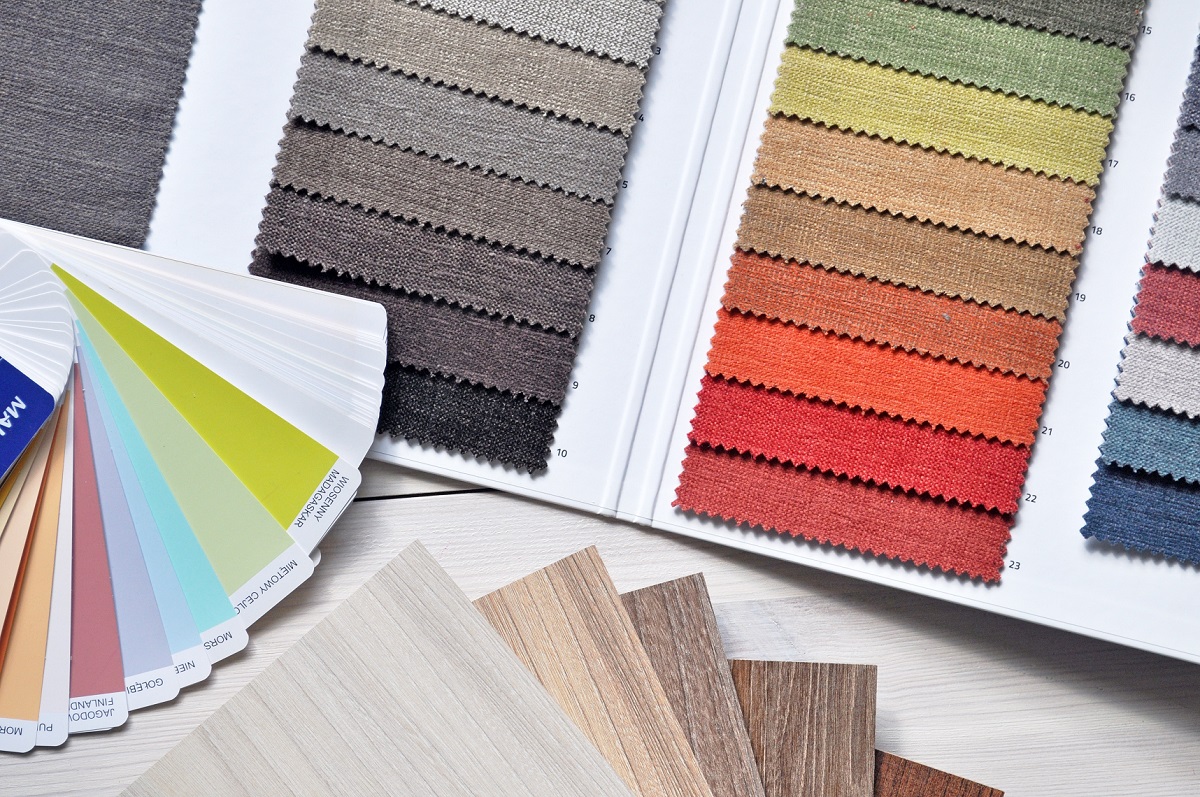
Can colour theory help you choose a sofa? Yes, it can. With so many beautiful tints, tones and shades available now, it’s really not easy to commit to just one colour. Colour plays a central role in how we feel about our home. It can influence mood, create atmosphere and can change the way a room looks, and feels, simply by changing the colour. Just as importantly, colour can also change the perception of space – so choosing the right colour sofa could actually make your living room appear larger.
One of the first sections that I covered in my online interior design diploma was all about colour theory and it really opened my eyes to realising just how much we’re affected by colour – both emotionally and technically. I’ve collaborated with Darlings of Chelsea to give you some ideas on embracing their colourful new range of sofas and colour schemes to go with them! So I’m going to cover the main colours on the spectrum and discuss their pros and cons as well as colour schemes that’ll go with your new sofa for an interior designer finish…

Red
Red suggests passion and energy, but it’s also a warning colour and shouldn’t be over used in a space. Warm colours such as red tend to be advancing colours. As a dominant colour, it’ll draw your eye and anything red will appear closer to you. A red sofa is ideal at the end of a long and narrow room for example as it’ll make the space appear wider, especially if you use a receding colour on the walls either side. Receding colours tend to be the cooler colours on the spectrum such as blue. If you have an open plan kitchen and living area, then red is a clever colour as it stimulates appetite.
When it comes to choosing a colour scheme to go with a red sofa, there are a few options available.
Complementary scheme – This is using the colour opposite on the wheel which is green. This scheme would work best if you use more green, such as on the walls. Too much red can feel claustrophobic and adding greens through plants is a great way to lift the room.
Monochromatic scheme – This is using a singular colour with various shades and tints. Neutral colours can be used too such as black, white, stone, beige and grey. You’ll want to use plenty of neutrals to tone the red down!
Adjacent scheme – Using colours that sit next to red on the colour wheel such as purples and oranges. This would create a really warm and cosy space for those unafraid of using colour!
Split-complementary scheme – In addition to a base colour, it uses two colours adjacent to its complement. So for red that would be chartreuse and aquamarine. Another scheme for those who love colour, colour and more colour!
Blue
Blue exudes calm and tranquillity. A cooling and receding colour which can make things appear further away. Paler blues reflect more light and can make a room feel brighter and more spacious. Blue is an easy and comfortable colour and can be used just about anywhere in the home – which is why its so popular!
Complementary scheme – For blue, its opposite colour is orange which suits it beautifully. Using shades such as coral will give a more contemporary feel.
Monochromatic scheme – This is using a singular colour with various shades and tints. Various blues can look stunning altogether – like the colours of the sea. Navy and pale blue give a beautiful coastal vibe and can be paired with greys, whites and stone for a crisp and clean finish.
Adjacent scheme – Greens and purples sit next to blue on the colour wheel. An adjacent scheme would work best if you use colours with the same tint, tone and shade. Opt for pastel or jewel tones for example, and stick to those shades of greens, purples and blues for a colour scheme that’s brave but works!
Split-complementary scheme – In addition to a base colour, it uses two colours adjacent to its complement. So for blue that’d vermillion and amber. This scheme is usually more subtle then an adjacent scheme and more comfortable for the eyes. If you love colour, but your family aren’t as brave – it can be a great alternative choice.
Yellow
Yellow is such a playful and creative colour, and also one of the most eye-catching. Did you know that yellow stimulates the nervous system, activates memory and encourages communication? This is why it’s such a popular colour for children! Yellow can be both a cold and warm colour depending on whether it’s closer to green or orange on the spectrum. Paler yellows can almost expand before your eyes giving a real sense of space. It’s a very welcoming colour and often used to brighten up a small, dark space. This can also work with your sofa and the image above perfectly illustrates this. The mostly dark and neutral space comes alive with this beautiful sofa which just welcomes you in!
Complementary scheme – Purples go really well with yellow – just make sure you use the same shade such as pale colours or jewel colours for a ‘together’ look.
Monochromatic scheme – Too many yellows together would feel like you’re staring down at a sunflower field. Uneless this is the look that you’re after, do throw in plenty of neutral colours to balance out the yellow and really let it pop!
Adjacent scheme – Greens and oranges are adjacent to yellow on the wheel. I like this scheme best when in citrus shades!
Split-complementary scheme – For yellow, the split-complementary colours are violet and magenta. This particular scheme would work beautifully with a mustard yellow.
We can use the same colour theory principles with the secondary and tertiary colours as we do with the primary ones. Just remember that as a rule of thumb – cooler colours appear further away (receding) and larger than warm colours (advancing). Advancing colours are a great choice if you want your sofa to be a statement piece in the room. Receding colours are a good option if you want other highlights in the room such as architectural details or a piece of artwork.
Green
A calming and relaxing colour which reflects balance, nature and growth. It’s the colour we think of when out in the open countryside and so an ideal colour if you want a sofa to unwind on. It’s a harmonious colour ideal for a group coming together to relax and re-energise.
Greens that are closer to yellow on the spectrum are more lively and refreshing whereas darker greens exude a noble elegance. As well as the colour of nature, green is also associated with money, good luck and jealousy. It is known to relieve stress and is why celebrities often chill out in a ‘green room’ before a show.
Orange
A really underused colour – orange is an active and welcoming colour which stimulates activity and appetite. Orange is often associated with positivity, informality and free spirit. It’s a warm and enthusiastic colour and makes us think of sunsets (nearing the end of a day) and Autumn (nearing the end of the year). Orange is therefore an ideal colour choice for a living room where you relax towards the end of the day as its the colour of transition in the natural environment.
Purple
Purple or violet is full of drama and luxury. It’s also a spiritual colour which can be both creative and introspective. An interesting note on colour psychology – purple can aggravate depression in those prone to it and so should be used sparingly or in softer lavender tones. Saying that, the colour purple is also a sensual and soothing colour. It has dignity which is why it’s often linked to royalty and the Church.
Many say that rules are meant to be broken and so if you fall in love with a sofa and it defies colour theory. Just blooming well go and get it on order! At the end of the day, we can make our rooms appear larger, more spacious, more cosy, cleaner and brighter. But if it doesn’t make you happy then what’s the point!?
Natalia xo


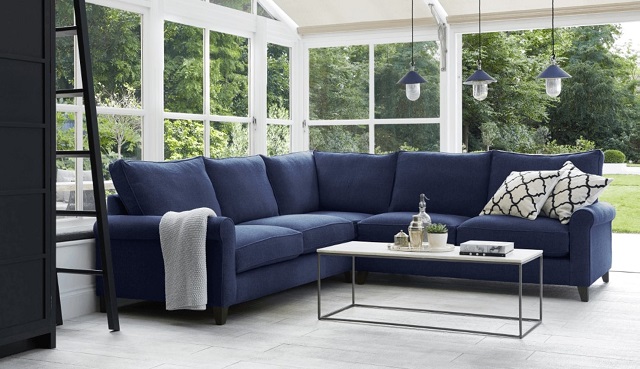
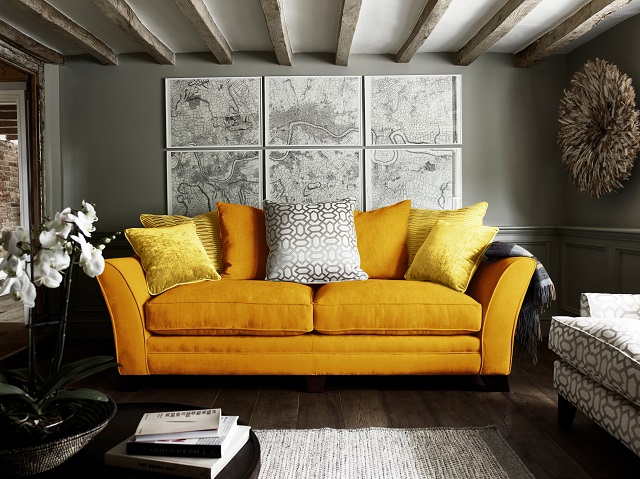
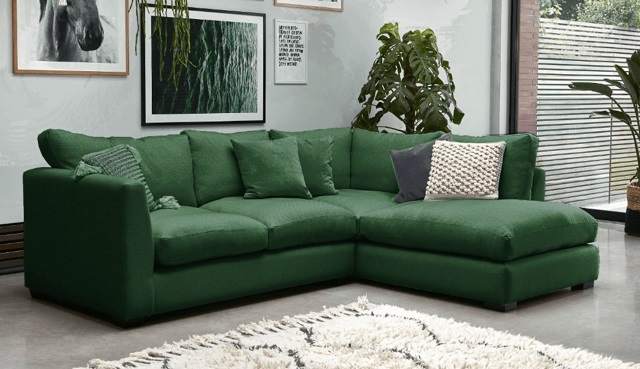
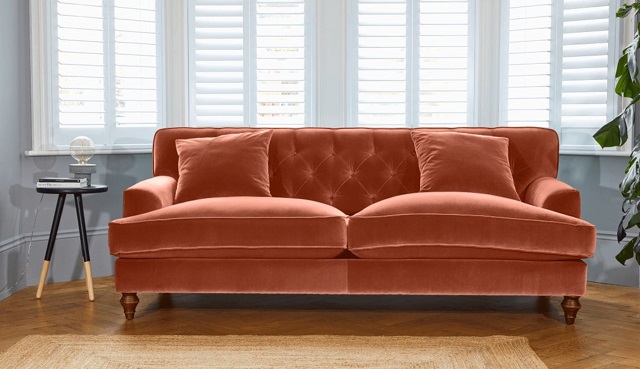
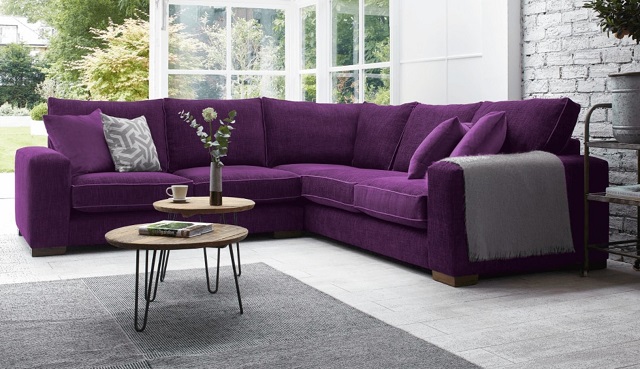
Yey for green!! Love our green sofa so much
A great selection of sofas and colours too. I’m not brave enough to have a purple sofa but I do like the navy one.
I love the whole subject of colour psychology and I also believe that it goes much deeper than just the science of our eyes and pivots on deeper emotional connections. Would LOVE a burnt orange velvet sofa!
Colour psychology is so interesting to read about! Great post :)
Love colour theory and how people respond to it. I may need a dark blue sofa in my life now!
Great read, Natalie! I like learning about colour theory. To be honest, I always used to go for neutral sofas (grey mainly). But next time, I want to be bolder and go for colour.
What a good read! I love the colour wheel & the idea behind it, so helpful when considering a new design scheme!
Colour has such an impact on how we not only perceive a room but more importantly how it makes us feel. Great post and I’m so needing a green sofa in my life!!
Colour psychology is so interesting and I don’t really think that people realise just how much colour can affect us. I’ve only really become aware of it in the past few years as we’ve bought our own home and had free reign with the decorating. For example, grey has become so popular as a neutral now but I just know I couldn’t live with a grey room. I feel like grey sucks the life energy right out of me. Orange, purple and red also affect me. These colours make me feel really on edge and anxious. But I’ve found that blues and greens make me feel calm, relaxed and at ease. Very thought provoking read!
hurray for green as well, here. We love our green sofa. My mom had one for ages, and I love having one as well.
I always believe color theory can help with anything decor-related. It’s an important factor.